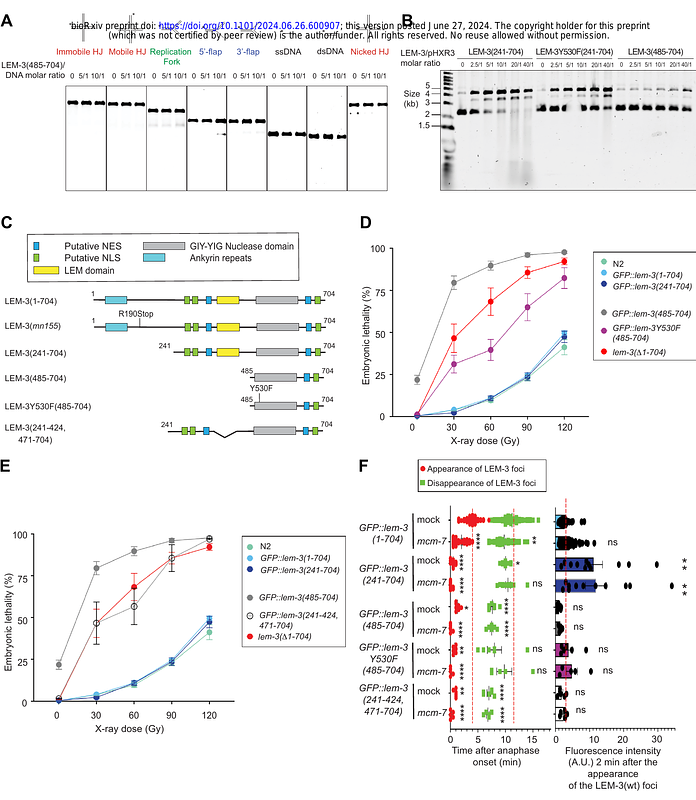Functional dissection of the conserved C. elegans LEM-3/ANKLE1 nuclease reveals a crucial requirement for the LEM-like and GIY-YIG domains for DNA bridges processing

Functional dissection of the conserved C. elegans LEM-3/ANKLE1 nuclease reveals a crucial requirement for the LEM-like and GIY-YIG domains for DNA bridges processing
Song, J.; Geary, P.; Hong, Y.; Rolland, S.; Gartner, A.
AbstractFaithful chromosome segregation requires the removal of all DNA bridges physically linking chromatids before the completion of cell division. While several redundant safeguard mechanisms to process these DNA bridges exist from S-phase to late anaphase, the conserved LEM-3/ANKLE1 nuclease has been proposed to be part of a 'last chance' mechanism that acts at the midbody to eliminate DNA bridges that persist until late cytokinesis. We show that LEM-3 can cleave a wide range of branched DNA substrates, including flaps, forks, nicked and intact Holliday Junctions. AlphaFold modeling data suggest that the catalytic mechanism of LEM-3/ANKLE1 is conserved, mirroring the mechanism observed in bacterial GIY-YIG nucleases. We also present evidence that LEM-3 may form a homodimeric complex on the Holliday Junction DNA. LEM-3 DNA binding capacity requires both the LEM-like and the GIY-YIG nuclease domains; both are also essential for LEM-3 recruitment to the midbody and its nuclease activity. Finally, we show that preventing LEM-3 nuclear access is important to avoid toxicity, likely caused by branched DNAs cleavage during normal DNA metabolism. Our data suggest that C. elegans LEM-3 acts as a 'last chance catch-all' enzyme that processes DNA bridges caused by various perturbations of DNA metabolism just before cells divide.


